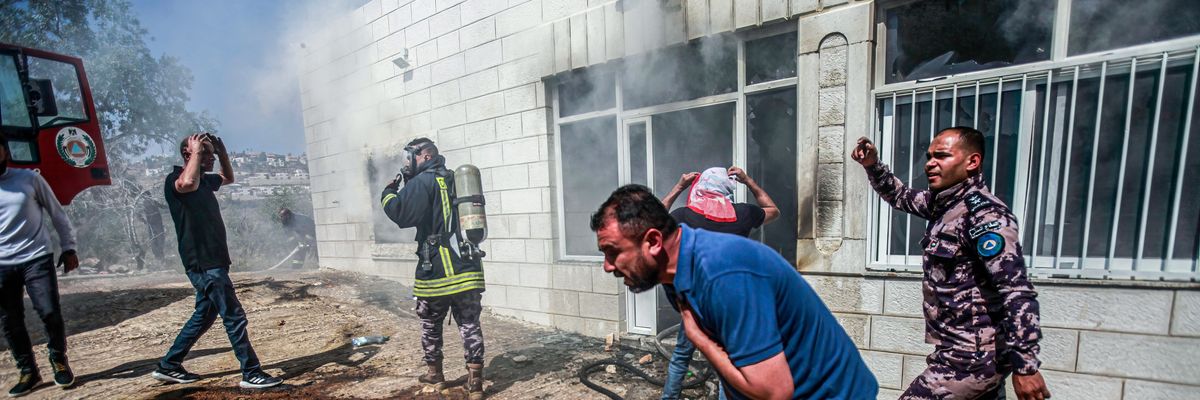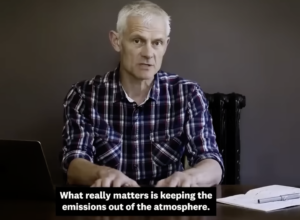[danard]Everyone Who Confirmed Reagan’s October Surprise on Iran Before the NY Times
A lot of people beyond Ben Barnes have said that Reagan’s 1980 election campaign conspired to keep American hostages in Iran.

On Saturday, the New York Times published a blockbuster story that said two prominent Texas Republicans flew across the Mideast in the summer of 1980 for secret meetings with regional leaders to urge them to tell Iran to keep the U.S. hostages in Tehran until after the election that pitted GOP candidate Ronald Reagan against then-President Jimmy Carter.
The Times reported that Ben Barnes, a key figure in Texas politics, said he made the trip with former Texas Gov. John Connally, a major supporter of Reagan’s campaign, and that when they returned home, Connally met in an airport lounge with William Casey, who’d been a top U.S. spy during World War II and was then Reagan’s campaign manager. Connally and Casey discussed the trip, according to Barnes, who The Times quoted as saying, “History needs to know that this happened.” After Reagan beat Carter in a landslide, Reagan appointed Casey head of the Central Intelligence Agency.
All this is powerful evidence that the Reagan campaign did — as has been alleged for decades — strike a deal with the Iranian government to prevent the hostages from being released. While that has never been proven, what’s known beyond a shadow of a doubt is that the Reagan campaign was deeply worried that Carter might get the hostages out before November and thereby give a big boost to his prospects.
You might understandably ask: If this actually happened, how could it have been kept secret? Why hasn’t anyone with knowledge of it spoken up before? The answer is that it hasn’t been kept secret, and many, many people have said it occurred. But most of the people doing so have been foreigners. Barnes is merely the most important American to finally come out and support the story.
The 1980 October Surprise theory has always been plausible on its face. Casey had worked on Richard Nixon’s 1968 presidential campaign (and was later named head of the Securities and Exchange Commission by Nixon). It’s since been proven that the Nixon’s presidential campaign secretly collaborated with the government of South Vietnam to prevent President Lyndon Johnson from striking a peace deal ending the Vietnam War. The Nixon campaign was concerned that peace would help his opponent in the race, Johnson’s vice president, Hubert Humphrey. Nixon’s cynicism can be measured by the fact that thanks to his gambit, 20,000 additional American soldiers, plus unknown hundreds of thousands of other people, died as the war continued for many years.
The concept of the October Surprise seems almost benign in comparison. A mere 52 American hostages had been seized by Iranian revolutionaries at the U.S. Embassy in Tehran, and all the scheme required was keeping them there for another few months.
Most of the important digging on this subject was done by the late Robert Parry, a one-time Associated Press reporter and founder of Consortium News. Parry and others found that an astonishing array of people at the top of world politics had said things similar to Barnes, long before Barnes spoke out. Here are the most important:
Abolhassan Bani-Sadr
Bani-Sadr was the president of post-revolutionary Iran from January 1980 until June 1981, when he was impeached and fled the country.
In Bani-Sadr’s 1991 memoir, “My Turn to Speak,” he wrote that:
In late October 1980, everyone was openly discussing the agreement with the Americans on the Reagan team. In the October 27 issue of Enghelab Eslami [“Islamic Revolution,” Bani-Sadr’s newspaper] I published an editorial saying that Carter was no longer in control of U.S. foreign policy and had yielded the real power to those who … had negotiated with the mullahs on the hostage affair.
The House of Representatives conducted an investigation of the subject, which was released in 1993. It patronizingly concluded that “Bani-Sadr’s analysis demonstrates how some Iranians may have mistakenly misled themselves to believe that Khomeini representatives met with Reagan campaign officials.”
When Ben Affleck’s movie “Argo” was released in 2013, Bani-Sadr said more:
Ayatollah Khomeini and Ronald Reagan had organized a clandestine negotiation, later known as the “October Surprise,” which prevented the attempts by myself and then-U.S. President Jimmy Carter to free the hostages. … Two of my advisors, Hussein Navab Safavi and Sadr-al-Hefazi, were executed by Khomeini’s regime because they had become aware of this secret.
When Bani-Sadr died in 2021, his New York Times obituary discreetly did not mention any of this.
Yitzhak Shamir
Shamir served two terms as Israel’s prime minister in the 1980s and early 1990s. At the time of the 1980 U.S. presidential campaign, he was Israel’s minister of foreign affairs.
The subject of the October Surprise came up when Shamir was interviewed by several reporters in 1993, after Shamir had left office. When one asked Shamir whether it had happened, Shamir immediately responded, “Of course. … I know in America, they know it.”
Shamir then declined to elaborate.
Yasser Arafat
Arafat was head of the Palestine Liberation Organization and the Palestinian National Authority. In 1996, he met with Carter in the Gaza Strip. According to historian Douglas Brinkley, Arafat told Carter, “You should know that in 1980 the Republicans approached me with an arms deal if I could arrange to keep the hostages in Iran until after the election. I want you to know that I turned them down.”
Most Read
“The Good Spy” by Kai Bird includes a fascinating tale of a Lebanese businessman named Mustafa Zein who claimed to have acted as a go-between Arafat and Jack Shaw, who worked with Casey on the Reagan campaign. Shaw told Bird that this was all a big misunderstanding on Zein’s part. Arafat, according to Zein, eventually told him that Casey had struck a deal directly with the Iranians at a meeting in Spain.
 theintercept.com/wp-content/uploads/2023/03/Ronald_Reagan_with_Alexandre_de_Marenches.jpg?resize=750%2C521?w=300 300w, theintercept.com/wp-content/uploads/2023/03/Ronald_Reagan_with_Alexandre_de_Marenches.jpg?resize=750%2C521?w=540 540w” sizes=”(max-width: 750px) 100vw, 750px” data-recalc-dims=”1″ class=”clear” style=”max-width: 100%; margin: 0.5em auto; display: block; height: auto; clear: both;” data-unique-identifier=””>
theintercept.com/wp-content/uploads/2023/03/Ronald_Reagan_with_Alexandre_de_Marenches.jpg?resize=750%2C521?w=300 300w, theintercept.com/wp-content/uploads/2023/03/Ronald_Reagan_with_Alexandre_de_Marenches.jpg?resize=750%2C521?w=540 540w” sizes=”(max-width: 750px) 100vw, 750px” data-recalc-dims=”1″ class=”clear” style=”max-width: 100%; margin: 0.5em auto; display: block; height: auto; clear: both;” data-unique-identifier=””>
President Ronald Reagan during a meeting with Alexandre de Marenches in the Oval Office on June 7, 1983.
Photo: Mary Anne Fackelman/White House
Alexandre de Marenches
In 1980, de Marenches was the head of France’s external intelligence agency, the Service de documentation extérieure et de contre-espionnage. The 1993 House investigation spoke with David Andelman, a journalist who had co-written de Marenches’s memoirs.
Andelman said de Marenches had told him off the record that he was involved in “setting up a meeting in Paris between Casey and some Iranians in late October of 1980.”
The House investigation also spoke to de Marenches, who denied any involvement in 1980 skullduggery. De Marenches traveled to California in December 1980, just after the election, to meet with Reagan. After Reagan took office, de Marenches became a close Reagan adviser.
The Russian Government
The House task force sent a request to the Russian government for any information it had in its intelligence files on the subject of the Reagan campaign in 1980. At the time, the Soviet Union had just collapsed, and the Russian government was eager for good relations with America, so it was incentivized to help the U.S. Congress.
Russia response was yes, the October Surprise happened. Part of it read: “William Casey, in 1980, met three times with representatives of the Iranian leadership. … The meetings took place in Madrid and Paris.”
These claims from Russia, however, did not appear in the investigation’s final declassified report. They were in the classified version, however. We know this because Parry stumbled across it when he went to the U.S. Capitol to pick up a regular copy of the report, but he was accidentally sent to a storage room full of copies of the classified version.
Parry wrote that he subsequently spoke to “one well-placed official in Europe who checked with the Russian government.” This official told him the Russian considered the report “a bomb” and “couldn’t believe it was ignored.”
The George H.W. Bush White House
As the House investigation put it, the main October Surprise allegation was that “during the summer of 1980, William Casey and other Americans met on several occasions in Madrid with … two Iranian officials sent at the direction of the Khomeini regime.” They asked the George H.W. Bush administration to produce any records the U.S. government might have on this subject. The House task force looked at everything and concluded “the evidence allegedly supporting each of these meetings was neither from credible sources nor corroborated.”
Here’s the funny thing, though. In 2011, Parry was looking through the records of the Bush Presidential Library. And there he found a memo from associate White House counsel Chester Paul Beach Jr., recording a conversation he’d had with State Department legal adviser Edwin D. Williamson about getting the relevant documents to the House investigators. Williamson, Beach wrote, had told him that they’d found “a cable from the Madrid embassy indicating that Bill Casey was in town, for purposes unknown.”
This memo from Beach and the mysterious cable from the Madrid embassy were somehow never turned over to the House investigation. Lee Hamilton, an Indiana Democrat who’d led the inquiry, wrote a letter to then-Secretary of State John Kerry in 2016 asking for the cable. He did not receive it. For Kai Bird’s book “The Outlier,” which includes a chapter of additional evidence about an October Surprise, Bird submitted a Freedom of Information Act request for the cable. The State Department likewise has not produced it for Bird — even after he filed a lawsuit in 2019 — informing him that they can’t find it.
At this point, even James Baker, first Reagan’s chief of staff and later his treasury secretary (and then Bush’s secretary of state), won’t say Casey wasn’t in Madrid. Asked about it by one-time Carter staffer Stuart Eizenstat, he responded: “Would I be surprised if Casey did it? There is nothing about Casey that would surprise me. He is a piece of work.”
Those are the highlights — but there is, believe it or not, more where this came from. The October Surprise story has long been derided as a conspiracy theory, and still has not been conclusively proven. But at this point, a belief that nothing out of the ordinary happened in 1980 requires faith in an enormous number of coincidences — so many that you might call it a coincidence theory.


